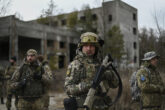February 20, 2018
The True Cost of Trump’s National Defense Strategy
On January 20, the U.S. Department of Defense released the Trump administration’s National Defense Strategy, followed nearly a month later by the president’s budget request for fiscal year 2019. Happily, the two are reasonably well aligned, an outcome that is never assured given how disconnected the processes of strategy formulation and budget building can be. Both documents clearly prioritize strategic competition with China and Russia. But good strategy involves decisions not only about what to prioritize but what not to. Unfortunately, neither document makes clear what missions the Department of Defense is going to end or deemphasize in order to shift focus to this new and very resource-intensive top priority of “expanding the competitive space” against countries investing heavily in high-end capabilities designed to limit U.S. freedom of action (known as “anti-access/area-denial” capabilities). This omission is a problem. As large as the expected increase for defense spending is in fiscal years 2018 and 2019, it is still not enough to cover everything.
In his remarks rolling out the request for the increase, David L. Norquist, the chief financial officer and controller at the Department of Defense, emphasized that this new budget was shaped by the new strategy, despite its concurrent construction. How large the defense budget needs to be depends on what the body politic wants the force to be able to do, which is the subject of the strategy. Budgets are not strategic documents, but when done correctly they are a necessary component of making a strategy real.
Read the full article in Foreign Affairs.
More from CNAS
-
Defense / Transatlantic Security
When Defense Becomes Destruction: Austria-Hungary’s Mistake and Ukraine’s RiskThis article was originally posted on War on the Rocks. The southeastern Polish city of Przemyśl, with its elegant 19th century Habsburg-era train station, remains one of the ...
By Franz-Stefan Gady
-
Defense / Transatlantic Security
Ukraine’s Catch-22 MomentThis article was originally published in the Financial Times. In Joseph Heller’s wartime classic, Catch-22, the protagonist Yossarian seeks out the US army surgeon Doc Daneeka...
By Franz-Stefan Gady
-
CNAS Insights | Budgetary Own Goals Undermine “Speed and Volume”
On November 7, Secretary of Defense Pete Hegseth laid out a plan to overhaul the Department of Defense’s (DOD’s) acquisition system. Placing an emphasis on delivering new capa...
By Philip Sheers, Carlton Haelig & Stacie Pettyjohn
-
Drones: Who Is Making the New Weapons of War?
From Ukraine and Russia to Gaza and Sudan, drones have become a key weapon of war. Which companies are making them, and profiting from this rapidly expanding but controversial...
By Stacie Pettyjohn




